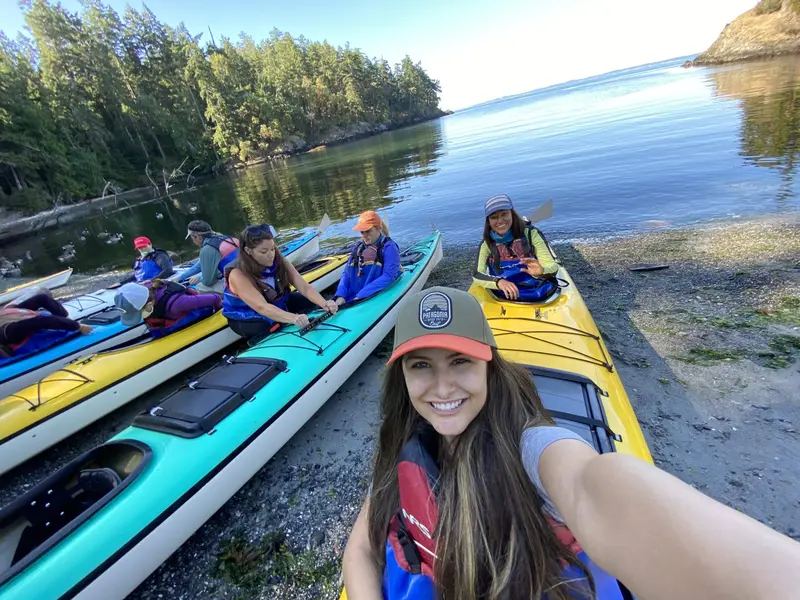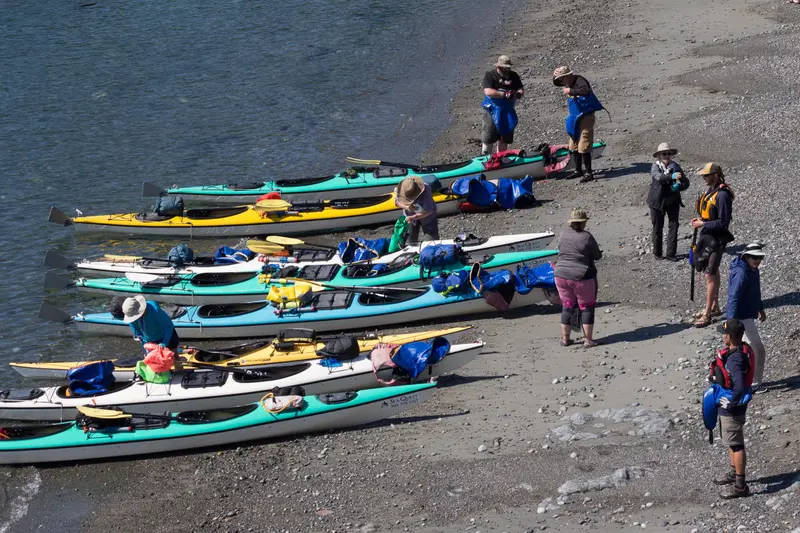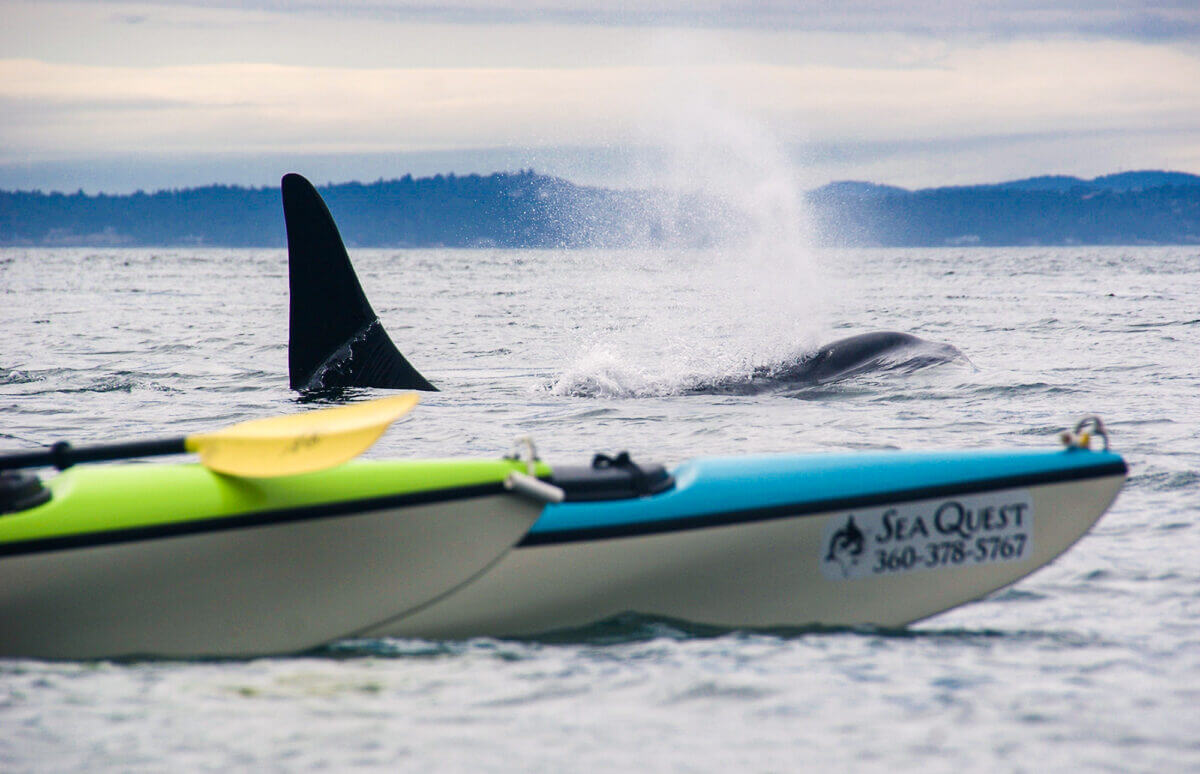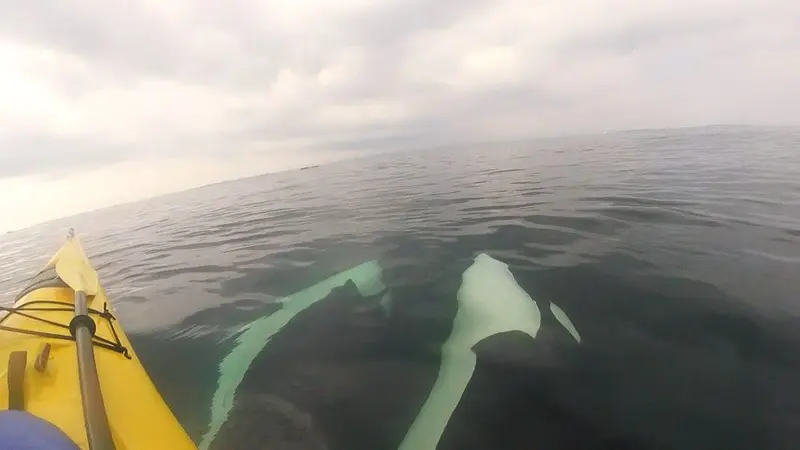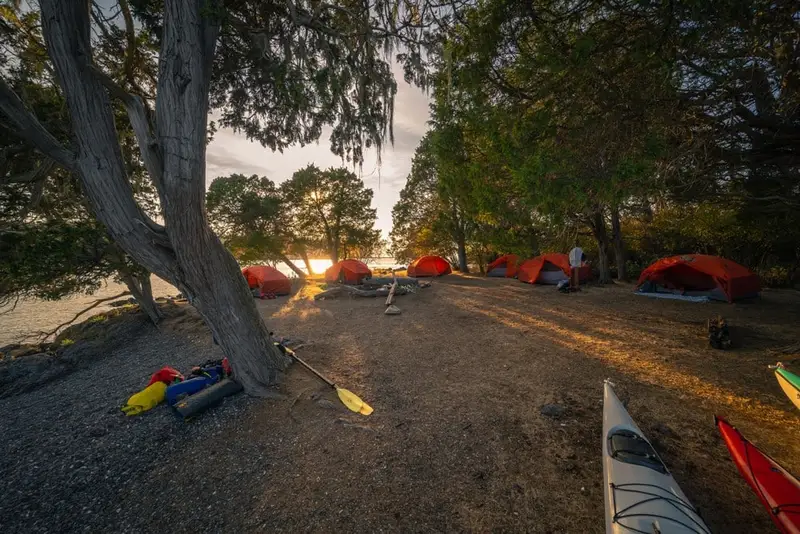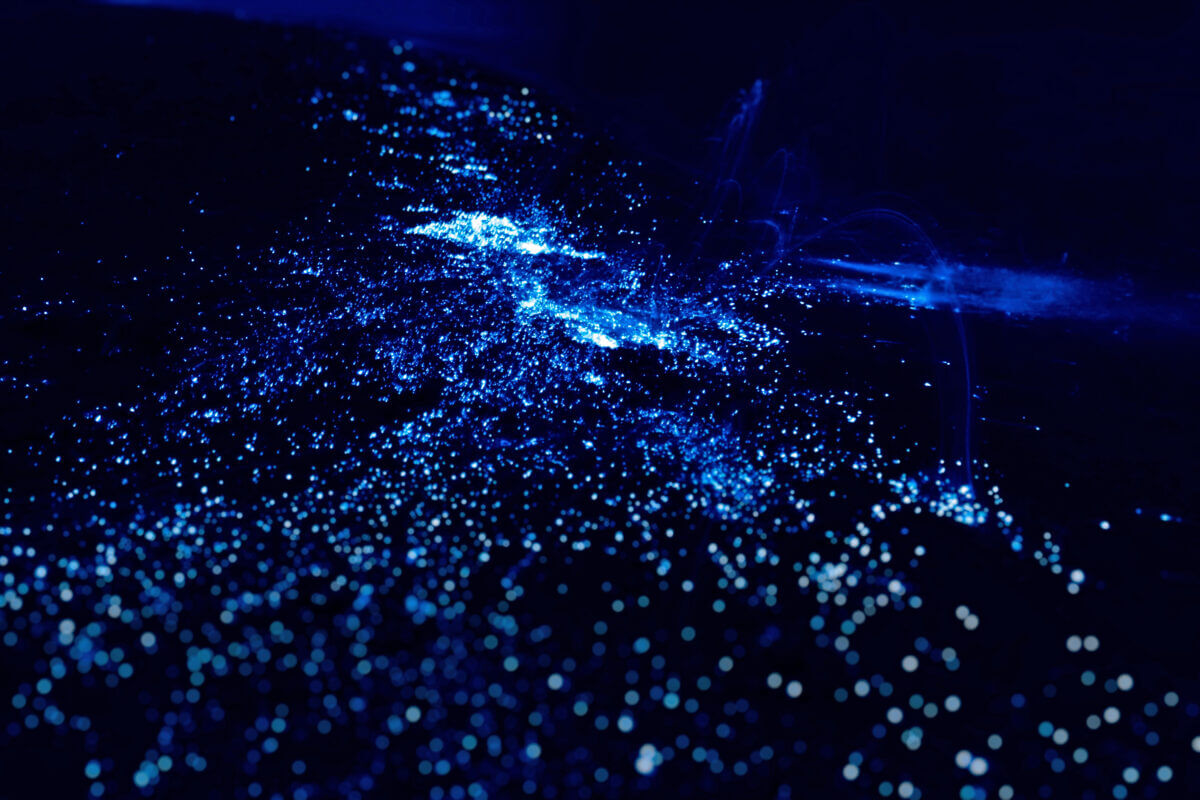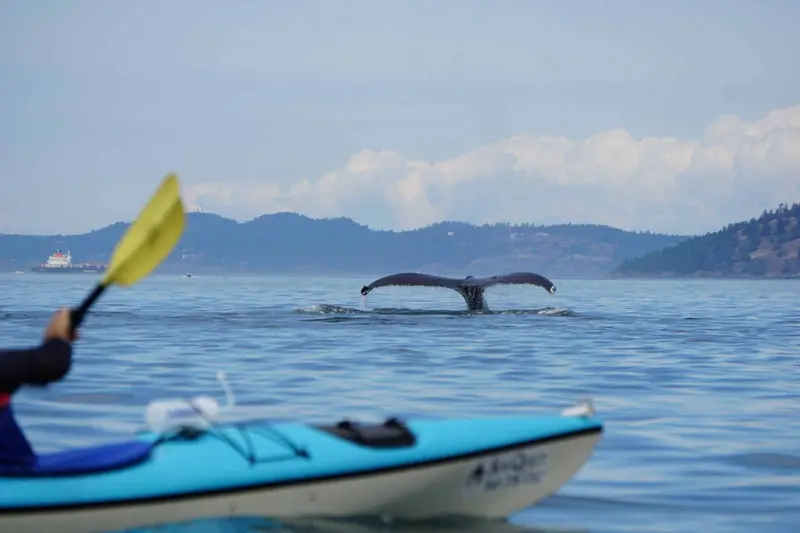This week our one day kayaking trips in the San Juan Islands had great success with finding a variety of pinnipeds, the “fin-footed” mammals such as seals and sea lions. Four species in total were found on our sea kayaking tours this week, which is about the maximum that can be found in the inland waters of Washington. The list included Steller’s Sea Lions, California Sea Lions, and Harbor Seals.
But the big star of the show was a Northern Elephant Seal, the largest of all seal species in the world. Adult males weigh 3 to 4 tons, the same average weight of our local killer whales! Most of the elephant seals we see while kayaking in the San Juan Islands are these gigantic adult males. For some reason the females do not like to enter the Salish Sea and remain further south near their California breeding beaches.
Most of the elephant seals that visit the San Juan Islands never come ashore. When not breeding or moulting, they have no reason to come ashore and stay out at sea for up to 8 months straight. Occasionally, a young male elephant seal will decide that a San Juan Island beach is the perfect place to moult its skin and fur. Last summer one did exactly that, causing a lot of commotion at our favorite kayak launching beach!
Elephant seals are the world’s champion pinniped divers, capable of staying underwater for 2 hours – as long as sperm whales. They may also be able to dive as deep as sperm whales, having been recorded at depths of 1.5 miles. Like sperm whales, they seem to prefer eating sharks, rays and squid that they catch while cruising the bottom. Elephant seals are almost always underwater, devoting only a few minutes to breathing at the surface between dives, and this makes them difficult to spot.
Elephant seals even sleep underwater as has recently been shown by a team of biologist that used high tech data recorders off California. They discovered that a well-fed seal will cat nap in the ocean. After a few minutes of recharging their oxygen levels, the seals would rapidly sink down to 500 feet, then slowly drift farther down in a shallower descent. The drifting elephant seals usually rolled over on their backs into a sleep position, stopped swimming, and spiraled slowly down for a dozen minutes or so. The initial rapid descent is thought to take the seals below the usual cruising depths of their main predators, killer whales and great white sharks.

